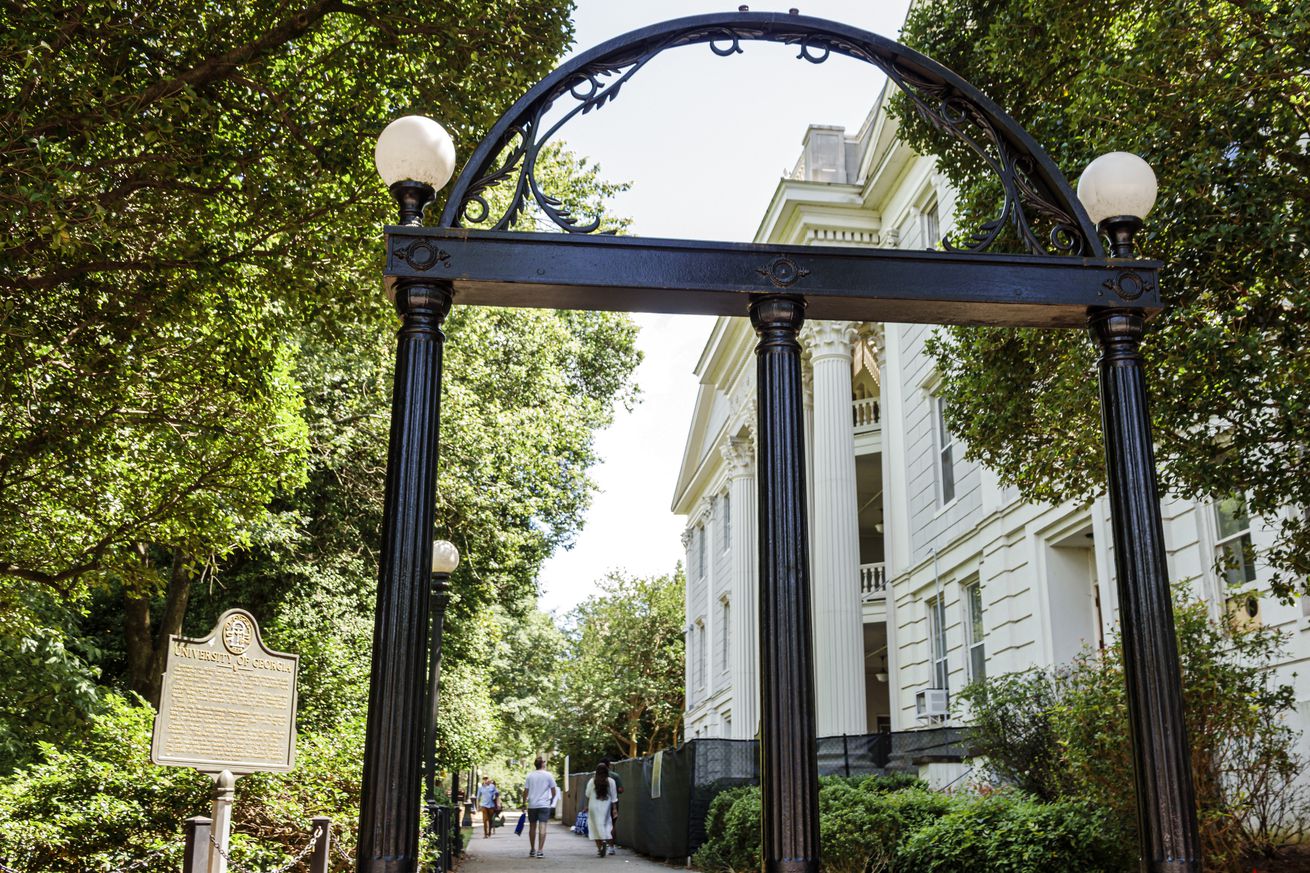
If you ever find yourself in Athens, Georgia for a game here are the must-sees.
We assume sometimes on this site that our readers are dyed in the red and black Bulldogs who have been coming to Athens since they were knee high to Uga VI. But everyone, whether a Georgia partisan, visiting fan, or nonaligned college football agnostic, has to make a first trip to the Classic City. As a public service, we thought it would be nice to provide those first time visitors a quick guide to our little patch of Heaven on the banks of the Oconee. Normally this space would include five bullet points, but that’s just not enough to get the feel for Athens. So this morning we present the seven things you have to see on your first trip to Athens.
#1 Downtown Athens: Start and end your trip through the Classic City by taking in the three square miles reputed to have more bars and taverns per inch than any other place in America. Swing into Wuxtry Records, the independent record shop where members of legendary rock band R.E.M. worked and bonded over their musical influences, crafting the sound that launched alternative rock and turned the rest of the world inside out.
Stop for a bite at The Last Resort for eclectic favorites or the Place for refined southern fare (pro tip: the buttermilk fried chicken sandwich and a side of Gouda grits).
Come back during the evening to take in a show at world famous music venues like The 40 Watt Club or the refurbished Georgia Theatre (whose rooftop bar is among the coolest places in town to enjoy a cocktail).
#2 The Arch: After you leave downtown head across Broad Street to the Arch. It’s the unofficial gateway to the campus and the dividing line between the University of Georgia and the larger (but still pretty small) city of Athens. The Arch’s three pillars stand for “Wisdom, Justice, and Moderation” the state motto of Georgia, and it is a representation of the arch which appears on Georgia’s state seal. Don’t walk through the Arch, just around it, as legend holds that underclassmen who walk through the Arch will never graduate (though to be fair, in Athens that’s not necessarily a punishment).
#3 North Campus: Directly behind the Arch lies North Campus, the original campus of the nation’s first state-chartered university. North Campus boasts Greek Revivial architecture, stately oaks, gardens, and historically significant buildings such as the Chapel, and Phi Kappa Hall & Demosthenian Hall, home to two debating societies among the University’s oldest student organizations. North Campus remains a favorite place to socialize, read, or nap off a big lunch.

Photo by John Adams/Icon Sportswire via Getty Images
#4 The Dawg Walk: Before every home game in Sanford Stadium the football team buses over to the stadium from the football facility off Lumpkin Street and walks into the stadium. It’s a great opportunity to spot players, and listen to the famous Redcoat Marching Band while getting fired up for kickoff.
#5 The Chapel Bell: Following UGA victories students and fans line up behind the Chapel on North Campus to ring the Chapel Bell. It’s a tradition that goes back to at least 1894, when Georgia beat Auburn 10-8 in Atlanta to score its first win over its oldest rival and the Red & Black student newspaper declared:
The Varsity Special left at 7 o’clock and the people of Athens awaited the arrival of the party at the Athens depot with a brass band and plenty of enthusiasm. Merchants opened their stores and told the boys to help themselves to boxes. Soon a large bonfire lighted up the campus, the college rang o t (sic) on the night air and the college yell was heard on every hand. The night had far spent itself when the last echo of the bell was heard and the dying embers of the great bonfire was all that was left to remind the passer by (sic) that the great day was over.
#6 The Tree That Owns Itself: Located at the corner of Dearing and Finley Streets on the edge of downtown Athens, Tree That Owns Itself is a white oak tree that, according to legend, has legal ownership of itself and of all land within eight feet of its base. The original tree (believed to date to as early as the mid-16th century) fell in 1942, but a new tree was grown from one of its acorns and planted in the same spot. The current tree is sometimes referred to as the Son of the Tree That Owns Itself.
Legend has it that William H. Jackson, the son of a former Revolutionary War soldier and Georgia governor, grew up adjacent to the tree and held many fond memories of it. Later, when he became a professor at the University, Jackson is reputed to have executed a deed designed to protect the tree from any future property owners with designs of getting into the lumberjack business:
I, W. H. Jackson, of the county of Clarke, of the one part, and the oak tree … of the county of Clarke, of the other part: Witnesseth, That the said W. H. Jackson for and in consideration of the great affection which he bears said tree, and his great desire to see it protected has conveyed, and by these presents do convey unto the said oak tree entire possession of itself and of all land within eight feet [2.4 m] of it on all sides.
No one has ever actually seen the deed, and many doubt that it ever really existed. It wouldn’t have any actual legal effect even if it did. But it’s the kind of quirky story that captures the essence of this eclectic college town.
#7 The State Botanical Garden of Georgia: The 313 acre State Botanical Garden is a research and exhibition center that showcases miles of nature trails, an art museum, and a learning center for plant enthusiasts young and old. It’s been designated as an “Important Birding Area” by the Audobon Society (check out the hummingbird trail). There are also playgrounds and special events, including a summer concert series.
I assure you, your first trip to Athens won’t be your last. As locals sometimes say, “you may leave this place, but it never leaves you.”
Go ‘Dawgs!!!
